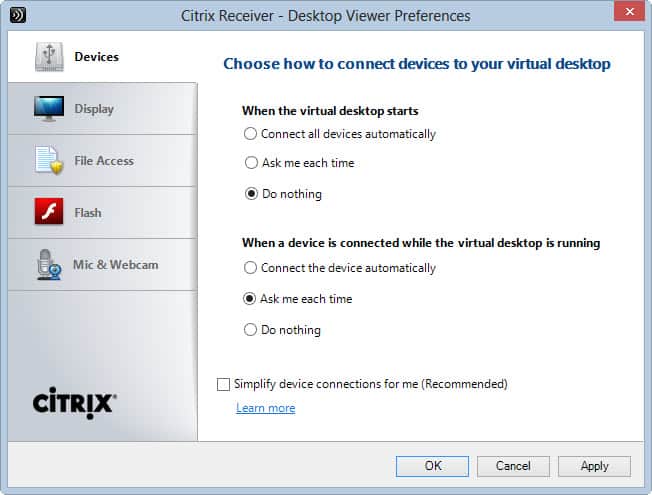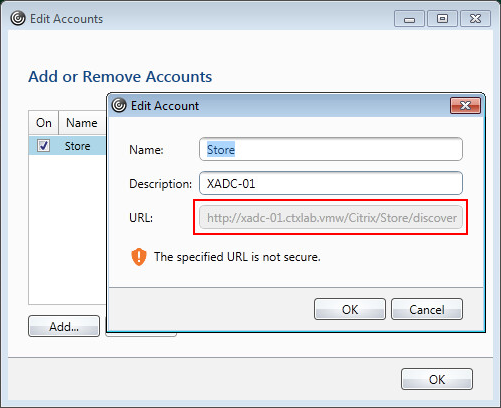Citrix Ica Client Clean Uninstall Autocad

Receiver Clean-Up Utility
If company policies prohibit you from using an.exe file, refer to. Manually installing and configuring Receiver for pass-through authentication Receiver can be used in pass-through authentication scenarios with XenApp and XenDesktop. This section also describes how to install and configure CitrixReciver.exe to use pass-through authentication for a Web Interface or StoreFront server connection. When successfully installed and configured, users can access their XenApp/XenDesktop resources without entering their credentials again. The credentials from the client machine are passed through automatically to the endpoint. Consider the following requirements for pass-through authentication:.
Citrix Receiver for Windows installation package is CitrixReceiver.exe. Load group policy files accordingly:. receiver.adm (located in the%SystemDrive% Program Files (x86) Citrix ICA Client Configuration folder on a Windows machine where Citrix Receiver is installed); the receiver.adm file must be present in Windows XP, Windows 2003 and thin client. receiver.admx, receiver.adml (located in the%SystemDrive% Program Files (x86) Citrix ICA Client Configuration folder on a Windows machine where Citrix Receiver is installed); to load the ADMX file to a GPO, refer to the 'About ADMX Template' Usage section in. Local administrator privileges are required for the client device to allow software installation and configuration. Note:.adm files are only used if running XPe OS for thin client. There are two different deployment scenarios to achieve pass-through authentication for XenApp/XenDesktop when enterprise software deployment tools such as Citrix Merchandising Server or Microsoft System Center Configuration Manager are not used:.
Clean Uninstaller
Install Citrix Receiver manually and then configure using Local Group Policy (importing receiver.adm, receiver.admx, receiver.adml) on various machines individually. Note: This is recommended for very small environments. Install Citrix Receiver using Active Directory Group Policy (for example, using CheckAndDeployCitrixReceiverEnterpriseStartupScript.bat, which is included with XenApp). Configuration using receiver.adm, receiver.admx, receiver.adml can then be applied using Active Directory Group Policy Management to a large number of machines and centrally managed. This option is not covered in this article because of higher level of complexity.
How to handle and clean Citrix ICA Client program leftovers. Problems with leftovers: it is not always an easy task to uninstall Citrix ICA Client completely on the.
Refer to CTX134280 - for more information. Note: Citrix strongly recommends that any steps outlined in this article are thoroughly tested and validated in non-production environments prior to use. To manually install and configure Receiver for pass-through authentication:.
Ctx325140
Run the following command using PowerShell on the Controller: Set-BrokerSite -TrustedRequestsSentToTheXmlServicePort $True. Log on to the client machine as the user with administrative rights. Uninstall any existing installations of Online Plugin or Citrix Receiver for Windows from the client machine before starting the installation process. Download Citrix Receiver for Windows Installation Package (CitrixReceiver.exe) from.
Use the appropriate installation deployment, either using the command line, or using the GUI. To use the command line:.
Open Windows Command Prompt and change directory where CitrixReceiver.exe is located. On the Command Prompt, run the following command to install Citrix Receiver with the SSON feature enabled: CitrixReceiver.exe /includeSSON. Note the information contained in the article; the parameter /includeSSON enables Single Sign-On for Receiver standard (CitrixReceiver.exe).

Power supplies for all occasions pdf. This option is not supported for Receiver enterprise (CitrixReceiverEnterprise.exe), which installs Single Sign-On by default. After installation is completed, a pop up message is displayed: “Installation completed successfully.”.
Configuring SSON via Local Group Policy Editor (GPO) By default, the group policy for SSON is to Enable pass-through authentication; this is sufficient for SSON to work when Desktop Viewer and Receiver for Web is not used. When using Desktop Viewer, enable the GPO to Allow pass-through authentication for all ICA connections. To use the ADM file to configure user authentication. Open Local Group Policy Editor by running the command gpedit.msc or by searching for “Edit group policy” on Start. Add the receiver.adm template to the Local Group Policy Editor by selecting Computer Configuration; right-click Administrative Templates, and choose Add/Remove Templates Click Add. After the receiver.adm template has been successfully added, expand Computer Configuration Administrative Templates Classic Administrative Templates (ADM) Citrix Components Citrix Receiver User authentication. Using a ADMX file for pass-through authentication.
Add the receiver.admx and receiver.adml template to the Local Group Policy Editor. Refer to the 'About ADMX Template Usage' section in.
After successfully adding the eceiver.admx and receiver.adml template, expand Computer Configuration Administrative Templates Citrix Components Citrix Receiver User Authentication. Select the Local user name password setting. Select Enable pass-through authentication and Allow pass-through authentication for all ICA connections options when enabling the preceding policy. Note: Do not use this method if Citrix Receiver Updater was used to install Receiver. In some cases, uninstalling Receiver for Windows does not remove all component files or registry entries. If you are unable to install Receiver after uninstalling an older version, use the to remove old files and registry entries.
If you delete Receiver-related files or registry entries just before uninstalling Receiver with Programs and Features, the uninstall might fail. The Microsoft Windows Installer (MSI) is trying to repair and uninstall at the same time. If this occurs, use Receiver to start an auto-repair.
After the auto-repair completes, you can cleanly uninstall Receiver with Programs and Features. Auto-repair occurs if there is a problem with Receiver; however, there is no Repair option in Programs and Features for Receiver.
Comments are closed.